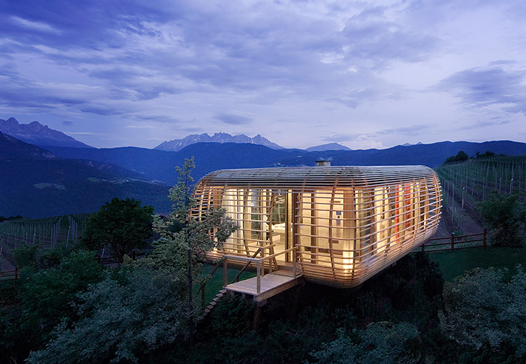

Handcrafted Architecture Makes Minimal Environmental Footprint
Fincube
Studio Aisslinger
Bozen, Italy
2008
NON-ALPOLIC
In 2003, German designer, Werner Aisslinger conceptualized a futuristic take on portable living. The idea Aisslinger coined the “Loftcube,” was soon picked up by businessman and hotelier, Josef Innerhofer. Its initial purpose was to create low-energy, affordable living spaces in urban areas. Interestingly, the very first prototype produced was housed on the roof of an urban high-rise.
Together, the initial plans were modified to introduce its potential as a means of eco-tourism. The manifestation of that design would become an eco-house with a minimal environmental footprint—the Fincube.
Handcrafted by local carpenters and craftsmen, the base of the structure is made of indigenous larch. In order to cause less damage to the earth upon construction, the structure sits 3m above ground. The Fincube is a temporary, sustainable structure that has the ability to be dismantled and recreated on a new site. With around 500 sq ft. of living space, the interior of the façade is completely enclosed in glass, allowing for a panoramic view of the surroundings. The interior was constructed with stone and Swiss pine for the natural aromas of the Alps.
Each cube is an independent unit that contains smart-function technology generated off a central touch panel system. With the ability to be reconstructed practically anywhere, the Fincube allows you to experience beautiful natural landscapes without negatively impacting them. This modern and uncomplicated structure also has the ability to be fully recycled after its use.
Although the first Fincube was created in Northern Italy in 2008, Aisslinger later went back to his “Loftcube” idea to create other incredible variations of his original design.
information and images © fincube & studio aisslinger
DISCLAIMER: This project does not feature ALPOLIC Materials. The Architecture, Design and Sustainability sections of our blog are for global projects that we find remarkable.


